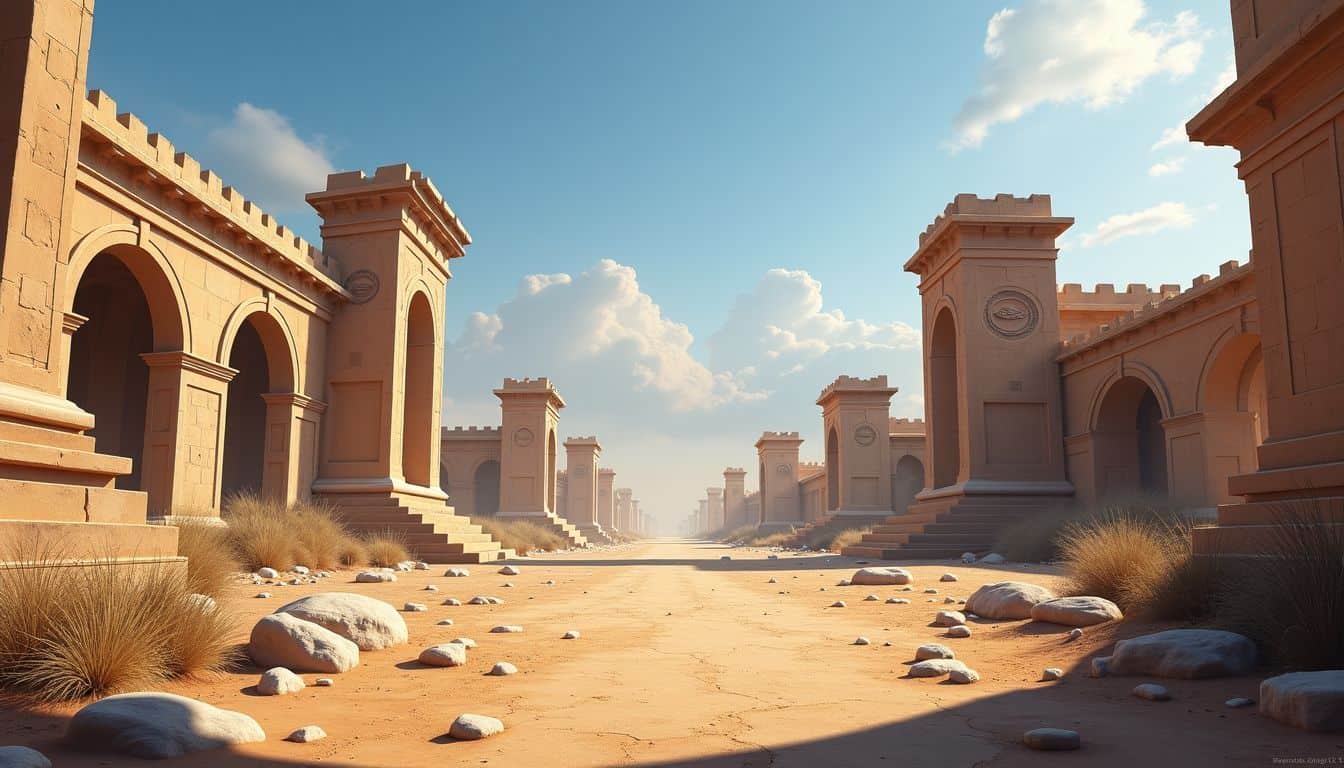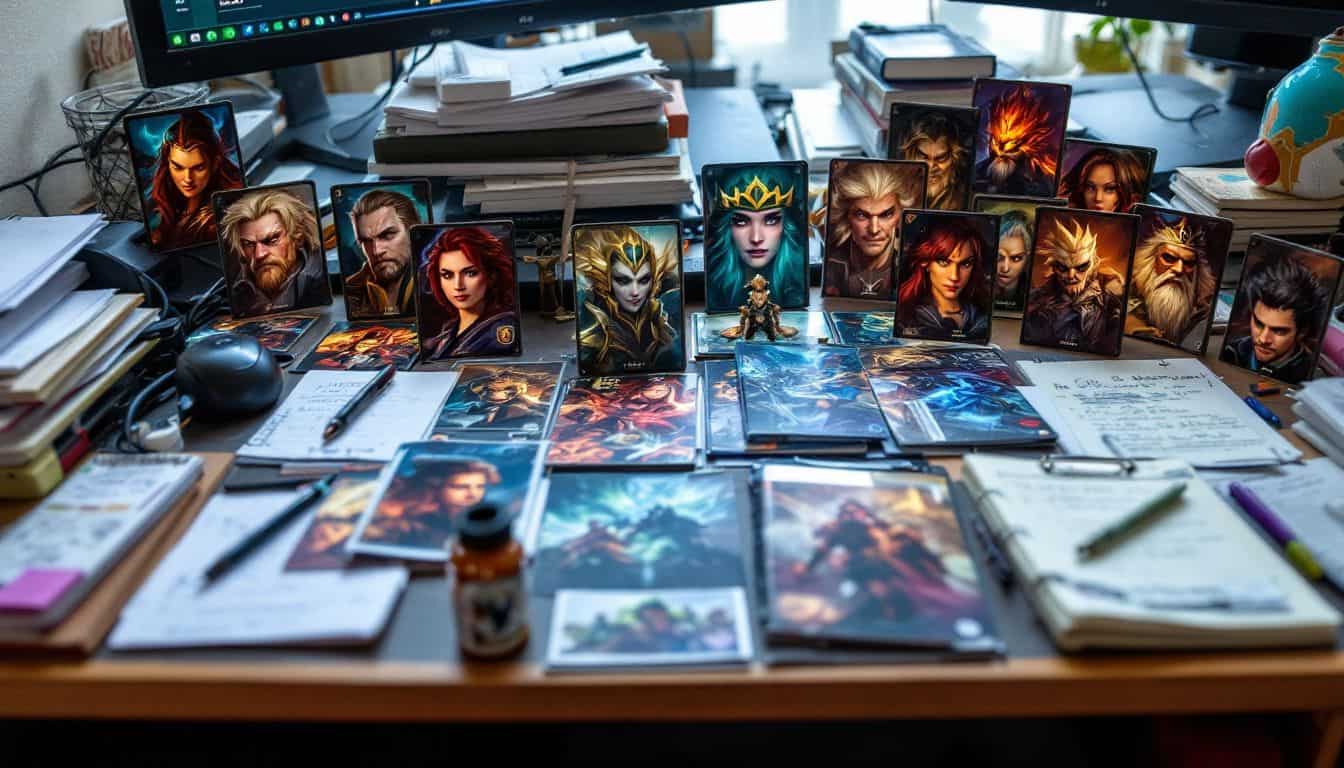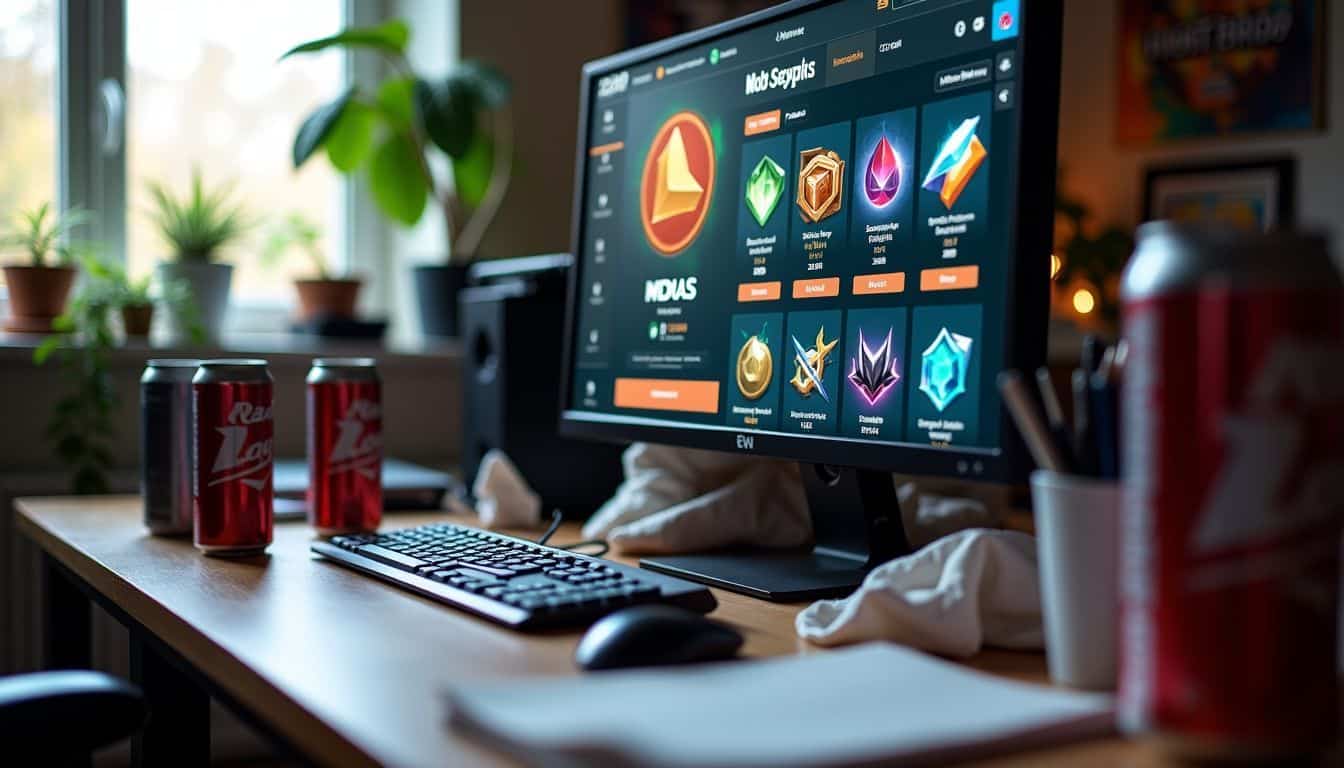Gamers often ask, “Is DOTA 2 better than League?” It’s a hot debate that splits the MOBA community right down the middle. DOTA 2 and League of Legends each bring different flavors to the table – from gameplay style to esports glory.
This guide breaks down six major differences to help you pick your perfect battle arena.
Key Takeaways
DOTA 2 has 123 heroes with complex mechanics, while League offers 140+ champions with simpler learning curves. Both games take different paths in gameplay, with DOTA 2 focusing on tactical depth and League on fast-paced action.
The International remains DOTA 2’s biggest tournament, with prize pools reaching $30 million through crowdfunding. League runs franchised leagues like LCS and LEC, where teams must buy spots to compete.
DOTA 2’s map changes between day and night every 4 minutes, affecting vision and strategy. League’s Summoner’s Rift stays static except during special events like Baron spawns.
DOTA 2’s item shop has over 100 items with nine inventory slots. League uses a simpler shop system focused on basic stat boosts. This makes League easier to learn but offers fewer strategic options.
League matches typically last 25–35 minutes, while DOTA 2 games often stretch beyond 40 minutes. League uses bright, cartoon-like graphics, while DOTA 2 maintains darker, more realistic visuals.
Table of Contents
Gameplay Differences

DOTA 2 and League of Legends take different paths in their gameplay styles. The games share the same MOBA roots, but DOTA 2 favors complex mechanics with a steep skill ceiling, while League focuses on fast-paced action and quick team fights.
Map Design and Objectives

Map layouts create major differences between League of Legends and DOTA 2. League’s Summoner’s Rift has an asymmetrical design that favors specific sides for different objectives. The Baron pit sits on the top side, while Dragon control happens at the bottom.
This creates distinct strategies for both teams based on their starting position. The static visuals only change during special events like Baron Nashor spawns, making the map easier to learn for new players.
The multiplayer online battle arena in DOTA 2 offers more complex terrain features. High and low ground mechanics affect combat and vision, giving teams tactical advantages. Trees across the map can be destroyed to create new paths or hiding spots.
The difference between DOTA 2 and League maps is like chess versus 3D chess – same basic idea, but one adds extra layers of strategy.
The map switches between day and night every 4 minutes, changing how far heroes can see. These features make the competitive gaming experience more dynamic and raise the skill ceiling for hardcore gamers.
Roles and Team Strategies

DOTA 2 and League have distinct approaches to team roles. DOTA 2 allows players to move freely and adjust their roles during matches. Teams can play without a dedicated jungler, creating additional strategic choices.
After extensive experience with both games, DOTA 2’s adaptable system creates dynamic gameplay moments. Players can alternate between carry, support, or initiator roles according to team requirements.
League maintains a defined role system that makes games more accessible. Each champion progresses based on individual power rather than team combinations. The game encourages players to focus on one role rather than switching positions.
Support players maintain support duties, while carries concentrate on collecting gold. This approach benefits newer players but offers less strategic variety compared to DOTA 2. The structured roles in League create more organized but less diverse gameplay than its competitor.
Both games provide entertaining experiences, but DOTA 2’s role system offers teams more options to test different strategies.
Heroes vs. Champions

DOTA 2 packs 123 heroes with deep mechanical skills, while League offers 140+ champions with smoother learning curves. Each DOTA 2 hero brings wild gameplay twists to the table, from stealing spells to controlling multiple units at once – stuff you won’t find in League’s more straightforward champion designs.
Variety and Complexity of Characters

Heroes in DOTA 2 excel with their flexible roles and build paths. Each hero offers distinct mechanics, from complex micro-management to powerful ultimates. The strategic depth shows through the many abilities that players must master.
Unlike other mobas, heroes can switch roles mid-game based on team needs and match flow.
League champions follow a more structured path with defined roles and playstyles. The game provides easier learning curves for new players through related ability sets. Players learn champion mechanics faster, but this results in fewer strategic options.
The esports scene demonstrates this difference – pro-DOTA 2 matches often include surprising hero picks and role swaps that keep fans guessing.
Skillsets and Abilities

DOTA 2 and League of Legends differ greatly in their ability systems. DOTA 2 gives each hero exactly 4 abilities, which can be active or passive skills. League champions pack more power with 1 passive ability, 4 active skills, and 2 summoner spells.
I’ve played both games for years, and DOTA 2’s abilities create stronger impacts. The spells in DOTA 2 can turn entire fights around with massive stuns or powerful ultimates. League abilities focus more on quick combos and shorter cooldowns.
The skill development varies in both games. DOTA 2’s abilities need perfect timing and positioning, making them harder to master. League’s abilities flow smoother and connect better in fights.
After playing many matches, I’ve noticed League champions like Kled have more predictable skill patterns. DOTA 2 adds variety with items that give new active abilities. This system creates unique combinations that keep players alert.
Both games reward skill, but DOTA 2 requires more practice to use abilities effectively.
Graphics and Visual Style

DOTA 2 and League show off their own art styles that set them apart. League sports bright colors and cartoon-like graphics, while DOTA 2 keeps things darker and more realistic, much like what you’d expect from Valve Corporation’s signature style.
Art Style Comparison

The visual aesthetics of these two MOBA titans paint vastly different pictures for players diving into their respective worlds.
| Aspect | League of Legends | DOTA 2 |
|---|---|---|
| Color Palette | – Bright, saturated colors – Candy-coated visual effects – Pop-art inspired themes | – Deep, rich tones – Gritty textures – Dark fantasy elements |
| Character Design | – Anime-inspired aesthetics – Smooth, curved lines – Youth-friendly appeal | – Realistic proportions – Sharp, angular designs – Mature themes |
| Environmental Details | – Clean, crisp textures – Simplified terrain features – High contrast elements | – Complex terrain details – Atmospheric fog effects – Subtle lighting variations |
| Visual Clarity | – Clear ability indicators – Distinct character outlines – Bold visual feedback | – Subtle visual cues – Blended effect layers – Natural shadow work |
| Animation Style | – Fluid, bouncy movements – Exaggerated expressions – Quick, snappy attacks | – Weighted movements – Realistic combat flows – Dramatic spell effects |
Animations and Effects

League of Legends shines with smooth, fluid animations that flow like water. Players love how champions move without delay, thanks to animation canceling that speeds up combat. Each skin brings fresh recall animations, giving gamers more ways to show off their style.
Riot Games has mastered the art of making characters feel responsive and quick.
DOTA 2 takes a different path with its animations. Heroes turn and move with specific rates, making them feel weightier and more grounded. This creates a slower, more tactical feel in fights.
Smooth animations make or break a MOBA’s feel – LoL nails it while DOTA 2 keeps it real
While some call these animations clunky, many pro players praise how they add depth to positioning and timing. Games stretch longer too – matches often hit 40 minutes or more, compared to LoL’s snappy 25-35 minute rounds.
Game Mechanics

Game mechanics make DOTA 2 and League stand apart like night and day. Each game packs its own shop system and item builds that shape how players fight, farm, and win their matches.
Itemization and Shop System

DOTA 2’s item shop features a massive selection of over 100 items. Players can mix and match these items to create powerful combinations for their heroes. Unlike other moba genre games, DOTA 2 lets you carry up to nine items at once – six in your main inventory and three in your backpack.
The shop system rewards smart thinking and quick decisions during matches.
LoL uses a different approach with its clear shop system. The items focus on basic stat boosts and simple passive effects. Most items give direct benefits like more damage or better defense.
This makes LoL’s shop easier to learn for new players, but it offers less room for creative builds. The pay-to-win debate doesn’t apply here, since both games keep their shops fair and balanced.
After testing builds in both games extensively, DOTA 2’s detailed item system gives players more ways to surprise their opponents.
Day/Night Cycle Impact
The day/night cycle sets MOBA games apart in major ways. Night phases limit vision range for most heroes, creating tense moments during gameplay mechanics. Heroes like Night Stalker and Luna gain special powers after sunset, forcing teams to adapt their strategies.
I’ve seen countless matches turn around because teams failed to respect the power shift at nightfall.
Vision control becomes a whole new game after sunset – AdmiralBulldog, Pro DOTA Player
The cycle runs every 4 minutes in real-time, affecting the high ground advantage and map control. Nighttime makes ganking easier and changes how teams approach objectives. My team once lost a crucial match because we pushed without proper vision during nighttime.
The darkness mechanic adds an extra layer of depth that keeps matches fresh and exciting. Pro streamers often use these cycles to time their rotations and secure key advantages for their teams.
Esports Scene

DOTA 2 and League clash in massive tournaments with prize pools that make players’ jaws drop. Both games pack arenas on Twitch, but their paths to esports glory look quite different – from League’s franchised system to DOTA’s open circuit that lets underdogs shine.
Competitive Structure and Tournaments
The Dota 2 eSports scene stands apart from League of Legends in how they run their tournaments. Each game takes a different path to crown their champions, and I’ve watched both scenes grow over the years.
- The International remains DOTA 2’s crown jewel, pulling in massive prize pools through crowdfunding that hit $30 million in recent years. Players can buy in-game items to boost the pool, making it the richest tournament in esports.
- League runs a tight ship with franchised regional leagues like the LCS in North America and LEC in Europe. Teams must buy spots to compete, unlike DOTA 2’s open circuit system.
- Pro teams in DOTA 2 can join any third-party tournament they want, creating more chances to compete. This freedom lets smaller teams rise up faster through the ranks.
- League’s structure focuses on weekly matches in regional leagues that lead to bigger events. Teams play regular seasons just like traditional sports, making it easier for fans to follow on Twitch.
- Prize money spreads differently between the games. DOTA 2 concentrates huge amounts in The International, while League splits it more evenly across the year through salaries and league prizes.
- DraftKings and other betting sites show more interest in League matches due to their regular schedule. The predictable format makes it easier to set odds and attract casual viewers.
- League’s World Championship pulls bigger viewer numbers through careful marketing and tie-ins like Arcane on Netflix. The controlled ecosystem helps build storylines that grab fans.
- Third-party organizers run most DOTA 2 events throughout the year. This creates variety but makes the scene harder to track for new fans.
- Regional qualifiers work differently too. League uses promotion tournaments, while DOTA 2 relies on point systems from multiple events to pick teams for The International.
Community Engagement
Beyond tournaments, both games build strong player connections in different ways. DOTA 2 players focus more on personal skill growth, creating smaller but tight-knit groups. Many players team up through boosting services or join specialized Discord channels to share strategies.
I’ve noticed DOTA 2’s community splits into distinct skill levels, with veterans often mentoring newcomers through complex game mechanics.
League of Legends takes a broader approach to community building. Their ranked system brings together casual and serious players through regular events and updates. Players connect through official forums, social media, and League of Legends esports streams.
My experience shows LoL’s community feels more welcoming to new players, though both games face similar challenges with toxic behavior. The lootbox system in LoL also creates shared excitement among players, sparking discussions and trading tips about rare cosmetic items.
People Also Ask
What makes DOTA 2 different from other games in its genre?
DOTA 2 started as a Blizzard mod and grew into its own game. Unlike other games that fill up your inbox with updates, DOTA 2 keeps things simple and focused on gameplay.
Is DOTA 2 just another DOTA clone?
No way! While many call it a DOTA clone, it’s actually the true heir to the original DOTA. The game keeps the core ideas that made DOTA great but adds modern touches.
How often do I need to check my inbox for DOTA 2 updates?
Unlike other games that spam your inbox, DOTA 2 sends fewer but more important updates. Blizzard’s approach to constant notifications isn’t followed here.
Why do people say DOTA 2 is harder to learn than other games?
The game isn’t a simple DOTA clone – it has deep mechanics that take time to master. While your inbox won’t flood with tutorial messages, the learning curve is steeper but more rewarding.
References
https://turboboost.gg/article/dota-2-vs-league-of-legends-key-differences (2024-04-13)
https://eloking.com/blog/dota2-vs-league-of-legends-differences-explained
https://1v9.gg/blog/dota2-vs-league-of-legends (2024-02-10)
https://blast.tv/dota/news/dota-vs-lol
https://gametree.me/blog/dota-2-vs-league-of-legends-answering-the-eternal-question/ (2024-12-15)
https://wecoach.gg/blog/article/league-of-legends-vs-dota-2-key-differences-in-2024-explained
https://escharts.com/news/comparison-league-legends-and-dota-2 (2023-05-18)
https://ticketbooth.com.sg/comparing-dota-2-and-league-of-legends-competitive-scene-insights/
